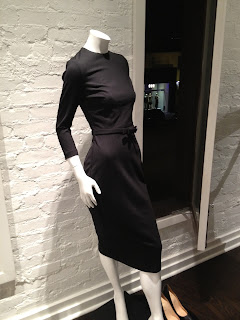Some things in life are better than others. Some wines are better, some restaurants are better, some days are better. This week I attended a ballet gala that was better than others. American Ballet Theatre's Opening Night Gala on Tuesday, October 16, 2012 at New York City Center was truly a gala of perfection and balance, under the brilliant Artistic Director Kevin McKenzie.
The night opened with Mark Morris'
Drink to Me Only within Thine Eyes (1988). We can thank the great Mikhail Baryshnikov for commissioning this work for ABT during his tenure as Artistic Director. It is such a different and stand out part of the repertoire for the company. Danced in pointe shoes, and very balletic, the ballet has a certain modernity and swiftness on stage. The stunning white and airy costumes, designed by Santo Loquasto, brighten the work as if grounded angels have arrived to dance. Morris' early works are so uplifting and fluid - it was the perfect way to begin the night.
Two Pas de Deux followed. The first was exquisite. James Kudelka's
Cruel World (1994) is an abstract work focusing on the idea of man's control over women. Set to the music of Tchaikovsky, the quiet duet is filled with sexual tensions and releases, eerie trance-like moments and the most subtly beautiful dance movements. Julie Kent, original to the role, danced this night, and she stole the night for me. Her delicate quality was mesmerizing. I don't know the work of Kudelka, but I am surely going to try to see more. And I'd love to see the complete ballet of
Cruel World. (the pas is on YouTube: http://www.youtube.com/watch?v=bA0EO24POis)
Stars and Stripes by George Balanchine was next. Balanchine's Americana pieces are usually not my favorite, but on this night it was a perfect moment to catch a breath (not for the dancers) and have some fun. Danced by 2 soloists, not principals, Daniil Simlin took the stage with fury. He was magnificent in his Coda, and though his surprising round of leaps ended in a fall inside the curtain, the audience gave an audible gasp and loud applause. And the end of the Pas led us all to a more festive intermission...
 |
| Champagne at Intermission: as chic as our guests |
The star of the night was the 70th Birthday presentation of Agnes de Mille's
Rodeo.
First choreographed for the Ballet Russe de Monte Carlo (who had taken residence in New York during World War II), this ballet was one of those great collaborative moments of dance in the 1940s. The magical combination of choreographer de Mille, composer Aaron Copland, and set designer Oliver Smith. We were presented with a documentary video, Rodeo@70, featuring old clips from the original production and new clips of ABT rehearsals. Peppered with interviews with a quirky and quick de Mille (who danced the original lead role), the video gave us insight of how important the work was and still is. It's the story of a cowgirl finding true love in a master cowboy and friend. I found it to be a piece on feminism, with this girl working hard to fit in with men, to be their equal. The sets are still modern in their simplicity and Americana genre. The stage literally glows from within as the curtain rises.

Xiomara Reyes was delightful as the pining cowgirl. Her strict ballet training was left at the wing as she humored us with movements of riding a horse and hoe-down circles. It's a story of happiness and tale of "just be yourself and you will succeed".
The repertoire was perhaps the most balanced for any ballet company I have seen. The nod to ABT's history and courage in the 1980s was smart and reverent. And bringing in an older work like
Rodeo and making it modern (due in large part to the wonderful costumes of Santo Loquasto) was a treat to an eager and hungry audience. We all left satisfied and happy. And talking about dance.
Of course the dinner after was beautiful. The Pierre ballroom is a magnificent gold, and the brown and white gingham tablecloths and yellow sunflower arrangements complimented well. Frederic Franklin (original cast member/cowboy of
Rodeo) joined in the festivities. Steak was served as the main course - reminding us of the Copland score we had just heard and all remembered from the "Beef: it's what's for dinner" commercials.
Some things in life are just better than other things. This was one of those things.






















































